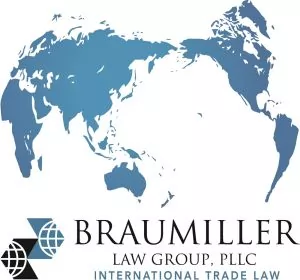US Customs & Border Protection (CBP) Headquarters ruling H327577 of May 8, 2024 dealt with an unusual set of circumstances and produced some unusual results.
The ruling involved a plant fertilizer product sold under the Hyshield brand and imported from Canada. It was classified on entry under 3101.00.00 or 3105.10.00 depending on the weight of the packaging. The importer, Sipco Innovations, filed a 1520(d) claim stating that it was eligible for duty free treatment under the US-Mexico-Canada (USMCA) Free Trade Agreement. The CBP CEE denied the claim and liquidated the entry as country of origin China and classified under 3913.90.20. It was subject to a 5.8% duty, the Merchandise Processing Fee, and the Section 301 25% duty on products of China. Sipco filed a protest against this assessment and it wound up in CBP Headquarters for a decision.
CBP ruled that the country of origin of the product was China but it wasn't subject to the China 301 duty and was eligible for USMCA benefits when imported from Canada. This unusual decision was the result of several rules at play and the nature of the imported product. Let's take a deeper look into the product and transaction.
The imported product
The Hyshield product is described as a plant fertilizer amendment that "tricks plants into thinking that it's being attacked by bugs and as a result ups its auto-immune system, keeping pathogens and pests at bay." It contains chitosan flakes derived from the exoskeletons of shellfish, such as shrimp, lobsters and crabs. The chitosan was actually imported from China into the US by a company in Bellingham, WA and sold to the producer of Hyshield in Canada.
In Canada, the chitosan flakes are combined with citric or lactic acid which causes an acid-base reaction. This enables the chitosan to be soluble in water. Other Canadian components are blended with the chitosan liquid and filtered to create the Hyshield product. CBP's laboratory determined that the Canadian process used to convert chitosan involves a chemical reaction that fundamentally changes its chemical structure.
The resultant product was then imported into the US by Sipco resulting in this issue.
HTS Classification
In its ruling, CBP HQ affirmed the CEE's classification of the Hyshield product under 3913.90.20. This classification would have a further effect on USMCA eligibility.
The ruling looked at the country of origin of the Hyshield product in two different ways: (1) the country of origin for China 301 duty purposes; and (2) the country of origin for marking purposes. The result was two different countries of origin.
Country of Origin for Marking Purposes
The country of origin marking rules for articles from a USMCA country are found in Part 102 and following provisions of the Customs Regulations. There is a hierarchy for determining the country of origin in Part 102.11. They are:
- A good is wholly obtained or produced;
- The good is produced exclusively from domestic materials; or
- Each foreign material incorporated in that good undergoes an applicable change in tariff classification set out in section 102.20 and satisfies any other applicable requirements of that sections, and all other requirements of these rules are satisfied (the "tariff shift" rule).
The subject Hyshield product was not "wholly obtained or produced" nor "produced exclusively from domestic materials." For this reason, the tariff shift rule will apply. In this instance the Chinese origin chitosan and the Hyshield product are classified under the same Heading. Next, CBP examined Part 102.11(b) which states that "except for a good that is specifically described in the Harmonized System as a set, or is classified as a set pursuant to General Note of Interpretation 3, where the country of origin cannot be determined under paragraph (a) of this section, the country of origin of the good is the country or countries or origin of the single material that imparts the essential character to the good."
The chitosan made in China and imported into Canada imparts the essential character to the Hyshield product and does not undergo the applicable tariff shift. Thus, the country of origin of the Hyshield product for marking purposes is China.
Eligibility for China 301 Duties
The Hyshield product is created by a chemical reaction taking place in Canada. The CBP laboratory confirmed that the processes in Canada result in a change of structure in that country.
To change the country of origin of a product there must be a substantial transformation resulting from a change in name, character, and use. There is a change in name in that the chitosan is transformed into a product having a different name. There is a change in character by its change in chemical structure. Finally, there is a change in use in that the Hyshield product performs a variety of uses that chitosan by itself cannot perform.
Because there is a substantial transformation in Canada converting the chitosan into the Hyshield product, the Section 301 duties do not apply to these imports.
USMCA Eligibility
For USMCA purposes, the Hyshield product is not wholly obtained or produced entirely in the territory of one or more USMCA countries, nor is it produced entirely from originating materials. Further, the Chinese chitosan and the Hyshield product are classified under the same subheading, so it fails to meet the tariff shift requirement.
However, General Note 11(n)(v) which applies to USMCA stipulates that "a good of any Heading in chapters 39 through 40 that satisfies one or more of the provisions enumerated in this subdivision shall be treated as an originating good." It goes on to state that "a good of chapter 39 through 40 that results from a chemical reaction in the territory of one or more of the USMCA countries shall be treated as an originating good." The General Note goes on to define what is a chemical reaction for this purpose. The CBP laboratory analysis confirmed that a chemical reaction took place in Canada.
In the ruling CBP agreed with the importer that the Hyshield product was the result of a chemical reaction occurring in Canada and satisfies the requirements for USMCA eligibility in GN11. The Hyshield product was thereby eligible for USMCA treatment.
Summary
So – we have a result that the country of origin of the Hyshield product is China for marking purposes but is not subject to the China 301 duties because it undergoes a substantial transformation in Canada. The product also meets the special origin rules in General Note 11 and qualifies for duty free entry under the USMCA.
Is this a "special case"? Possibly – but it serves as a lesson that different rules may apply to an imported product and it is always useful to read the fine print.
Check out our new Digital Magazine Get the inside scoop on the Braumiller Law Group & Braumiller Consulting Group "peeps." Expertise in International Trade Compliance.
The content of this article is intended to provide a general guide to the subject matter. Specialist advice should be sought about your specific circumstances.


